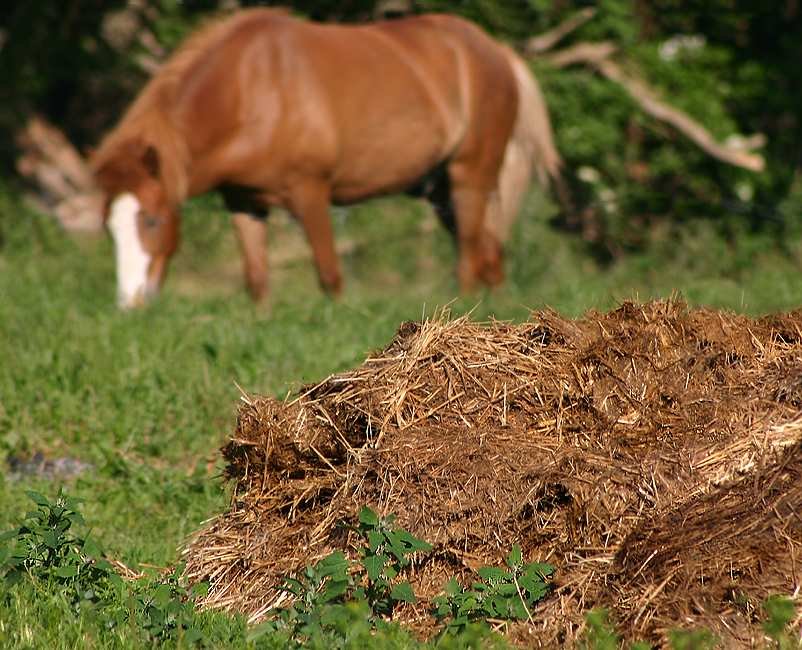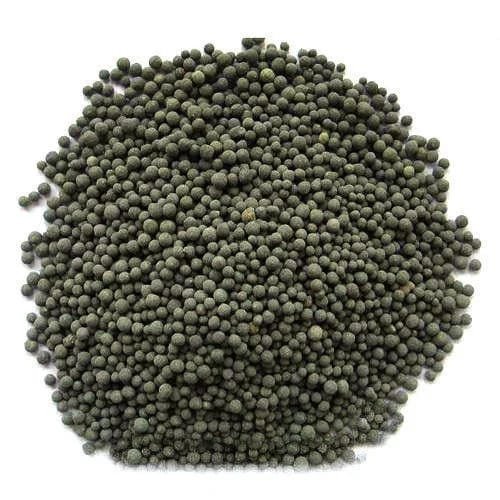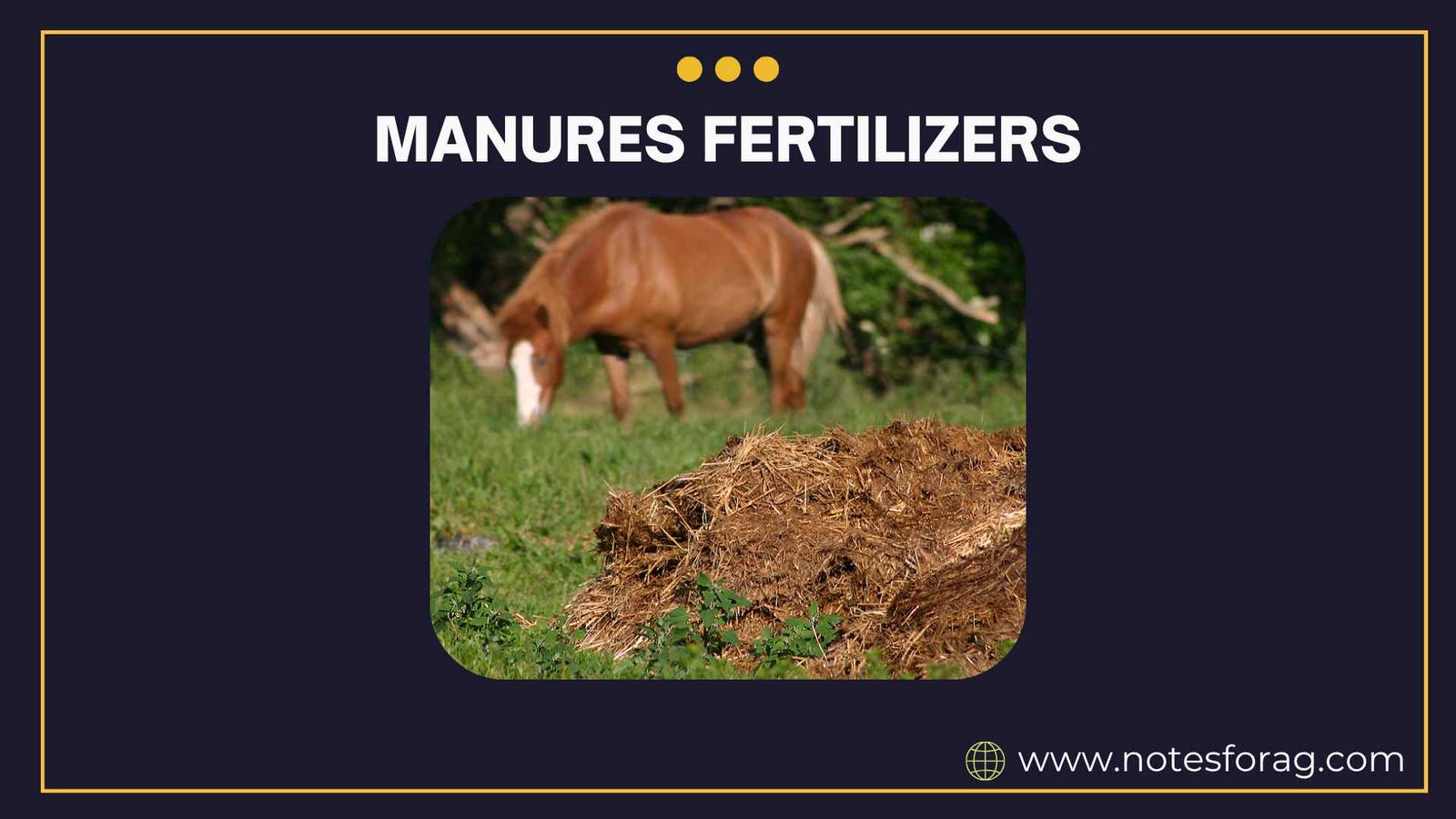Introduction
Soil is a living, dynamic system that provides the essential medium for plant growth and productivity. The fertility of soil determines its capacity to support agricultural production by supplying vital nutrients to crops. However, continuous cultivation, poor farming practices, and environmental degradation can lead to nutrient depletion and reduced productivity. Therefore, soil fertility management through the use of manures and fertilizers becomes essential. This document explores the concepts of manures, fertilizers, and various strategies for soil fertility management. It explains the types, advantages, limitations, and roles of organic and inorganic inputs in maintaining sustainable agriculture.
Summary of Manure fertilizers
- Compost and natural manures are slow-release organic amendments that enrich soil structure, boost moisture retention, and support microbial life, though they must be applied in large quantities for visible results.
- Chemical fertilizers provide highly concentrated nutrients like nitrogen, phosphorus, and potassium for rapid crop growth, but excessive use can degrade soil health and harm the environment.
- Effective soil fertility management blends organic manures, synthetic fertilizers, crop rotation, biofertilizers, and conservation techniques to promote sustainable productivity and long-term environmental balance.
Table of Contents
Manures
What are Manures?

Manures are organic substances obtained from the decomposition of plant and animal residues. These include farmyard manure, compost, green manure, and other biodegradable wastes. Manures are a traditional and sustainable source of nutrients that enhance soil fertility and structure.
Types of Manures
Farmyard Manure (FYM)
FYM is a mixture of cattle dung, urine, litter, and leftover fodder. It is rich in organic matter and provides essential nutrients like nitrogen, phosphorus, and potassium in small but balanced quantities. FYM improves the soil structure, enhances microbial activity, and increases the water-holding capacity of soil.
Compost Manure
Compost is prepared by decomposing organic waste like vegetable peels, crop residues, and kitchen waste under controlled conditions. It is nutrient-rich and helps improve soil aeration, moisture retention, and microbial population. Vermicompost, produced using earthworms, is a highly nutritious form of compost.
Green Manure
Green manure involves the cultivation of certain crops (like legumes) and incorporating them into the soil before they mature. These plants add nitrogen to the soil through symbiotic nitrogen fixation and enhance organic matter content.
Concentrated Organic Manures
These include oil cakes, blood meal, fish meal, and bone meal, which have high nutrient content, especially nitrogen and phosphorus. They release nutrients slowly and improve soil health over time.
Advantages of Manures
- Enhance soil organic matter
- Improve soil structure and water-holding capacity
- Stimulate microbial activity
- Release nutrients slowly and steadily
- Eco-friendly and cost-effective
Limitations of Manures
- Low nutrient content compared to chemical fertilizers
- Require large quantities
- Slow nutrient release
- Risk of weed seeds and pathogens
Fertilizers
What are Fertilizers?

Fertilizers are chemical or mineral substances that are added to soil to supply essential nutrients directly to plants. They are highly concentrated and available in specific formulations to meet crop needs. Fertilizers play a vital role in modern agriculture to achieve higher productivity.
Types of Fertilizers
Nitrogenous Fertilizers
These fertilizers supply nitrogen, an essential nutrient for plant growth. Examples include urea, ammonium nitrate, and ammonium sulfate. Nitrogen promotes leafy growth and is vital for chlorophyll formation.
Phosphatic Fertilizers
These supply phosphorus needed for root development and flowering. Examples are superphosphate and diammonium phosphate (DAP). Phosphorus also helps in energy transfer within the plant.
Potassic Fertilizers
They supply potassium, which enhances resistance to diseases and improves fruit quality. Muriate of potash and sulfate of potash are common potassic fertilizers.
Complex or Mixed Fertilizers
These contain a combination of two or more major nutrients. Examples include NPK fertilizers, which provide nitrogen, phosphorus, and potassium in a balanced proportion.
Micronutrient Fertilizers

These are used to correct deficiencies of micronutrients like zinc, boron, iron, and manganese. Although required in small amounts, they are essential for plant health.
Advantages of Fertilizers
- High nutrient content
- Quick nutrient release and absorption
- Easy to handle and apply
- Targeted application for specific crop needs
- Increases crop yield rapidly
Limitations of Fertilizers
- Overuse can lead to soil degradation
- Can cause water pollution through leaching
- May reduce soil microbial activity
- Expensive compared to organic manures
- Residual toxicity and soil acidity problems
Soil Fertility Management
Importance of Soil Fertility Management
Soil fertility management is essential for sustainable agriculture. It ensures long-term productivity, maintains soil health, and reduces environmental degradation. Proper management involves a combination of organic and inorganic inputs, conservation practices, and crop management strategies.
Principles of Soil Fertility Management
- Balance between nutrient addition and crop removal
- Use of both organic and inorganic sources
- Minimizing nutrient losses
- Enhancing biological activity in soil
- Site-specific nutrient management
Components of Soil Fertility Management
Integrated Nutrient Management (INM)
INM involves the combined use of chemical fertilizers, organic manures, and biofertilizers to maintain soil fertility and productivity. This approach ensures nutrient availability while preserving soil health.
Crop Rotation and Diversification
Growing different types of crops in sequence helps in maintaining soil fertility. Leguminous crops fix atmospheric nitrogen, reducing the need for nitrogen fertilizers. Crop diversification prevents nutrient depletion and pest build-up.
Soil Testing and Fertility Mapping
Regular soil testing helps in understanding nutrient status and planning fertilizer applications accordingly. Fertility mapping allows precision agriculture and site-specific interventions.
Use of Biofertilizers
Biofertilizers contain living microorganisms that promote nutrient availability through nitrogen fixation, phosphorus solubilization, and organic matter decomposition. Examples include Rhizobium, Azotobacter, and phosphate-solubilizing bacteria.
Conservation Tillage
Minimum tillage practices preserve soil structure, reduce erosion, and maintain organic matter levels. Conservation tillage helps in long-term fertility management.
Organic Farming Practices
Organic farming relies on natural inputs and avoids synthetic chemicals. It promotes the use of compost, green manures, and crop residues to enhance soil fertility.
Mulching and Cover Cropping
Mulching with plant residues or plastic helps retain soil moisture, suppress weeds, and add organic matter. Cover crops protect soil during fallow periods and add nutrients upon decomposition.
Water and Irrigation Management
Efficient water use supports nutrient uptake and prevents leaching losses. Irrigation should be planned based on soil type, crop needs, and weather conditions.
Erosion Control Measures
Soil erosion depletes nutrients and reduces fertility. Techniques like contour plowing, terracing, and planting vegetation barriers help conserve soil.
Balanced Fertilization
Applying nutrients in correct proportions prevents imbalances and toxicity. Balanced fertilization improves nutrient use efficiency and crop quality.
Precision Agriculture
This involves the use of technology (like GPS, sensors, and data analytics) to monitor and manage field variability. Precision farming ensures accurate input application, reducing waste and improving soil health.
Comparative Analysis: Manures vs. Fertilizers
| Parameter | Manures | Fertilizers |
|---|---|---|
| Nutrient Content | Low | High |
| Nutrient Release | Slow | Fast |
| Soil Health | Improves over time | May degrade with overuse |
| Cost | Low | High |
| Environmental Impact | Eco-friendly | Can cause pollution |
| Availability | Local sources | Commercial sources |
| Residual Effect | Long-lasting | Short-term |
| Application Quantity | Bulk required | Small quantities sufficient |
Role of Organic and Inorganic Inputs in Sustainable Agriculture
Sustainable agriculture requires a balanced approach. Organic inputs (like manures, compost, and biofertilizers) improve soil structure, enhance biodiversity, and ensure long-term productivity. Inorganic inputs (like chemical fertilizers) provide immediate nutrients and help in meeting crop demand. The integration of both leads to efficient nutrient use, improved soil fertility, and reduced environmental impact.
Challenges in Soil Fertility Management
- Lack of awareness among farmers
- Inadequate availability of quality organic inputs
- High cost of fertilizers
- Soil degradation due to overuse
- Poor irrigation practices
- Climate change and extreme weather
Future Strategies for Improving Soil Fertility
- Promotion of integrated nutrient management
- Adoption of precision farming techniques
- Encouraging organic and regenerative agriculture
- Strengthening soil testing infrastructure
- Farmer education and capacity building
- Development of location-specific fertilizer recommendations
Conclusion
Achieving long-term farmland productivity and resilience hinges on smart soil fertility management that blends the best of both organic and chemical nutrient sources. Organic inputs like manures, compost, and green manures not only supply essential N-P-K micronutrients, but also rebuild soil structure, increase water retention, and feed beneficial microorganisms. In contrast, synthetic fertilizers offer immediate nutrient availability and higher crop yields, but carry environmental risks such as soil degradation, water pollution, and microbial imbalance when misapplied.
The real power lies in integration. Integrated Nutrient Management (INM) synergizes organic and inorganic sources with biofertilizers and crop-specific nutrient strategies. For example, combining farmyard manure with nitrogen–phosphorus–potassium applications has been scientifically shown to boost yield, soil organic carbon, and nutrient-use efficiency more than chemical fertilizers alone. Legume-based green manures fix atmospheric nitrogen and reduce synthetic fertilizer needs, while biofertilizers support nutrient cycling and plant–microbial synergy.
Soil-health practices like cover cropping, reduced tillage, mulching, and crop rotation help maintain structure, prevent erosion, buffer pH, and optimize nutrient uptake. Technology-driven precision farming further enhances efficiency and reduces waste, ensuring nutrients are delivered precisely where and when crops need them.
However, successful implementation faces hurdles. Farmers must have access to affordable quality organic inputs, reliable soil testing, and clear agronomic guidance. Climate shifts, market volatility, and resource constraints also pose challenges. Overcoming these requires collaborative efforts involving investment in research, extension services, and policy support for sustainable nutrient management.
To sum up, managing soil fertility isn’t a choice between manures and fertilizers. It’s a nuanced balance. A holistic, site-specific approach that aligns biological and technological tools ensures high yields, healthy soils, enhanced biodiversity, and a cleaner environment. This lays the foundation for resilient, productive, and future-ready agriculture.
Frequently Asked Questions (FAQs)
What is the difference between organic manure and chemical fertilizer?
Organic manure comes from decomposed plant or animal matter and gradually improves soil structure and biology. Chemical fertilizers are synthetic, concentrated nutrient sources that boost crop growth quickly but may harm soil health if overused.
How does green manure improve soil fertility?
Green manure leguminous or cover crops plowed into the soil adds nitrogen, organic matter, and microbial support, reducing the need for synthetic fertilizers while reducing erosion.
What is integrated soil fertility management (ISFM)?
ISFM combines organic manures, chemical fertilizers, biofertilizers, crop rotation, and conservation tillage to optimize nutrient availability, productivity, and environmental sustainability.
Related Articles

